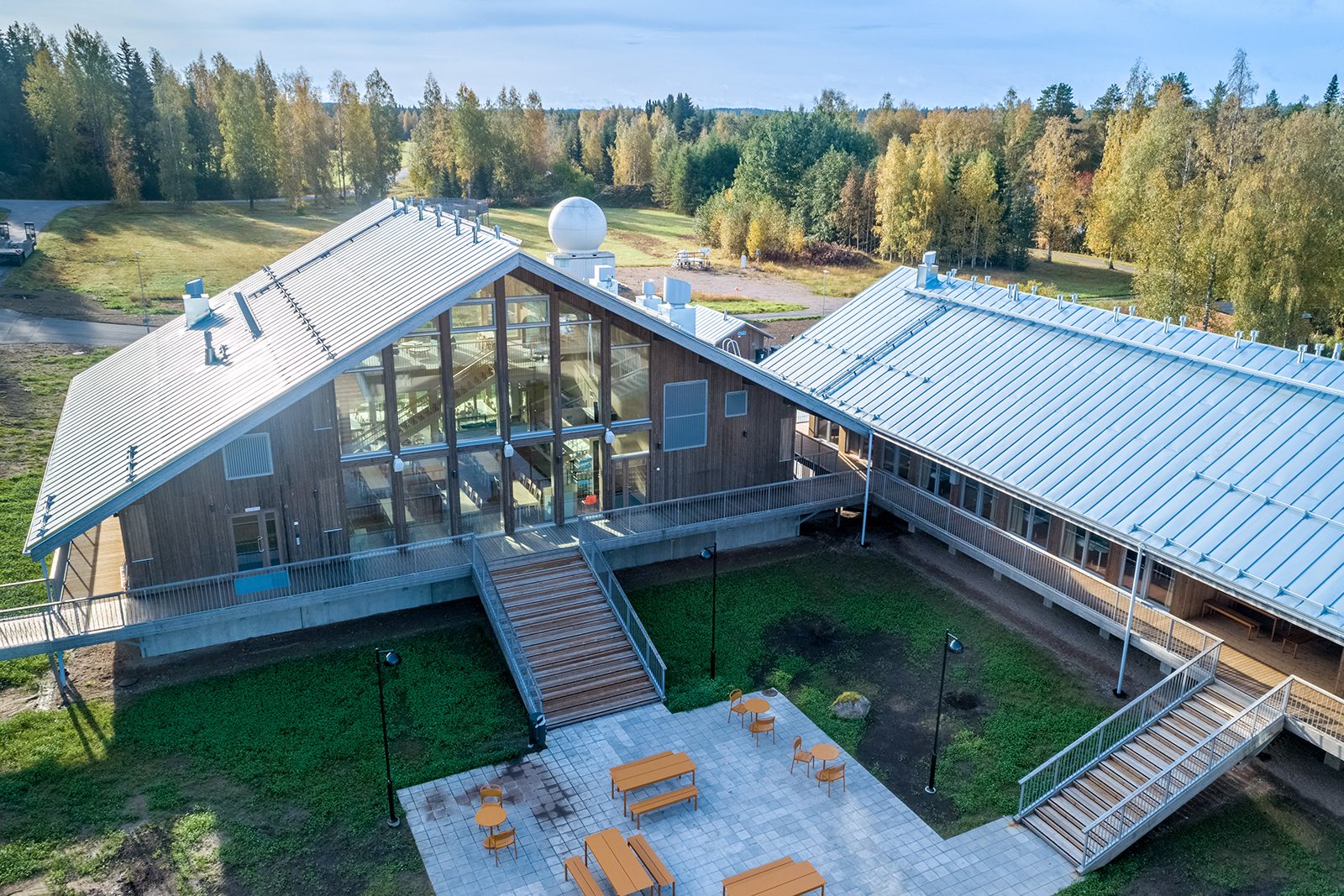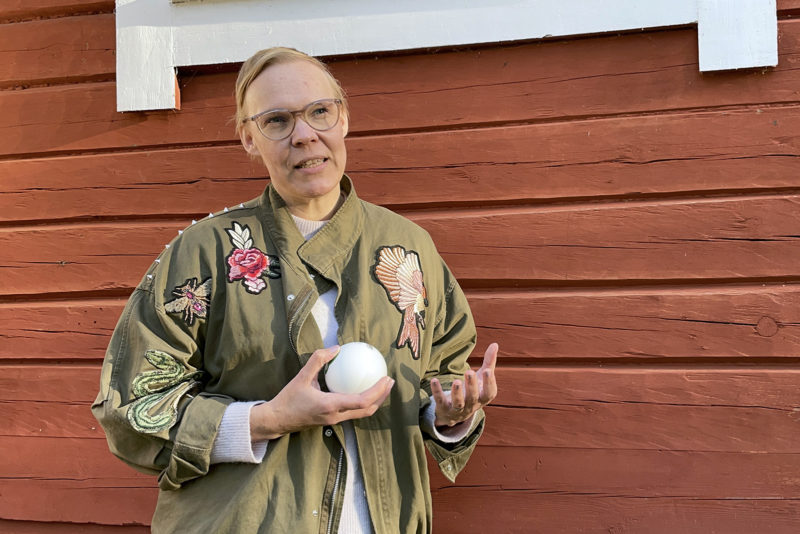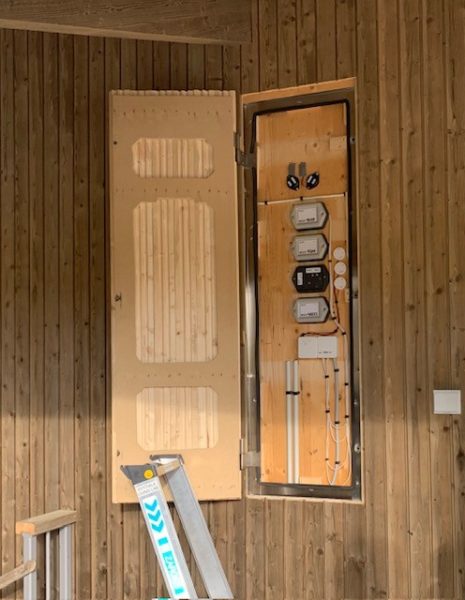
A new building commissioned by the University of Helsinki comprises hundreds of sensors gathering data on the effect of wood on well-being.
Finnish research on the health and well-being effects of wooden buildings is advancing, thanks to new facilities.
’The health and well-being effects of wood buildings are a topic of interest, but there is a shortage of longitudinal research data on it everywhere,’ says Tuula Jyske, Associate Professor (Wood Material Science) at the University of Helsinki.

A boost to the study of wood as a construction and interiors material was given in October with the inauguration of a new wooden building at the Hyytiälä Forest Station of the University of Helsinki. The building houses a dining room, working space and 35 bedrooms, all of which function as a multidisciplinary Living Lab.
The Hyytiälä Forest Station is located in Juupajoki, some 50 kilometres north-east of Tampere.
With a frame of cross-laminated timber (CLT), the building hides hundreds of sensors of ten different types, which gather data on various aspects of the building’s ’well-being’ – such as the variation in humidity and temperature. In the dining room and the bedrooms, things like wall temperature and moisture and the quality of indoor air are measured.
The building is designed for a minimum of 150 years; that is, until the 2170s at least. Jyske points out that using wood in construction brings added value to the timber harvested. A wooden building also makes a long-term carbon storage.
’As long as forestry is sustainable, wood construction will also be,’ Jyske says.
Wooden building found to support well-being
The first testing phase, started last summer, focused on the interaction between humans and the materials.
People who stayed at Hyytiälä were asked about feelings of anxiety, stress, and other factors affecting well-being.
The findings confirmed the expectations. Accommodation in a wooden building supported well-being and it was experienced as pleasing. As a hygroscopic material, wood both absorbs moisture from air and releases it, which means that it equalizes the humidity of indoor air. In well-constructed, healthy and safe rooms we all sleep better.

’Wood in interiors is calming and relieves stress, irritability and other negative feelings,’ Jyske says.
’Naturally, however, all these things are affected by many other factors besides just wood – such as mechanical air conditioning and acoustics. Another important factor for human well-being as experienced and measured is the social environment, such as the interaction between people staying at Hyytiälä.’
Wood in interiors is calming and relieves stress, irritability and other negative feelings.
Jyske thinks it possible that in the future, the effects of wooden buildings could be studied from blood and sputum samples. This would require physiological and medical expertise and specific research funding.
’So far, however, we’re only at the pilot stage in the research,’ Jyske notes.
Nordic people experience wood as familiar material
According to Tuula Jyske, wood is experienced as something positive due to human evolution. Wood is a construction and interiors material appreciated particularly by those who favour sustainable lifestyles and consumption habits.
’For us humans, natural elements are interesting and pleasing, and they create a feeling of safety. At the background there is the love of nature based on the evolution of our species,’ Jyske says.

According to Jyske, researchers have pondered on how cultural differences affect our attitude to wooden buildings. In the Nordic countries, wood is valued as a cosy and warm material, while elsewhere in Europe where the climate is warmer, cool surfaces, such as stone, may be experienced as pleasing.
Wood is an antibacterial material
Tuula Jyske was part of a research group which found that surface treatment and humidity affect the antibacterial properties of wood. Research results show that increasing the use of wood with an appropriate finish as surface material would make sense.
The researchers exposed various surfaces to bacteria transmitted by dry hands in an authentic environment at the Finnish science Centre Heureka. The amount of bacterial growth was then determined in a laboratory.
The bacterial growth was found to be smallest on surfaces made of non-porous materials, such as glazed tiles, laminated wood, vinyl-coated cork and, what was most interesting from the viewpoint of wood construction, varnished wood.
Porous wood with no treatment was found to support somewhat more bacteria.
’In humid conditions, a porous wood surface is able to absorb the moisture from bacteria. In contrast, in dry conditions, bacteria transmitted via hands are better able to adhere to porous as opposed to non-porous surfaces. In both cases, the chemical ingredients in wood may be able to curb the growth of bacteria significantly,’ Jyske says.
In humid conditions, a porous wood surface is able to absorb the moisture from bacteria. In contrast, in dry conditions, bacteria transmitted via hands are better able to adhere to porous as opposed to non-porous surfaces. In both cases, the chemical ingredients in wood may be able to curb the growth of bacteria significantly.
The hygienic properties of a wood surface can be affected by the choice of finishing and the tree species used. The tests showed, among other things, that the viability of the Staphylococcus epidermidis bacteria found on skin weakened on almost all the materials studied.
The viability of the bacteria was weakest on untreated oak. The tests included species in commercial use from Finland, the United States and Japan.
’We’re sure to see more pandemics in the future, and it is important to prevent contagion via surfaces,’ Jyske says.
S. epidermidis is harmless to healthy individuals, but may cause a bacterial infection after surgery, for example. Researchers have warned that the bacteria may be mutating into a form more lethal to post-surgical patients.
- Read more: Multiplying value of wood by thermal treatment – no chemicals are needed
- Read more: One of a kind: head office made of wood — 5 ideas
